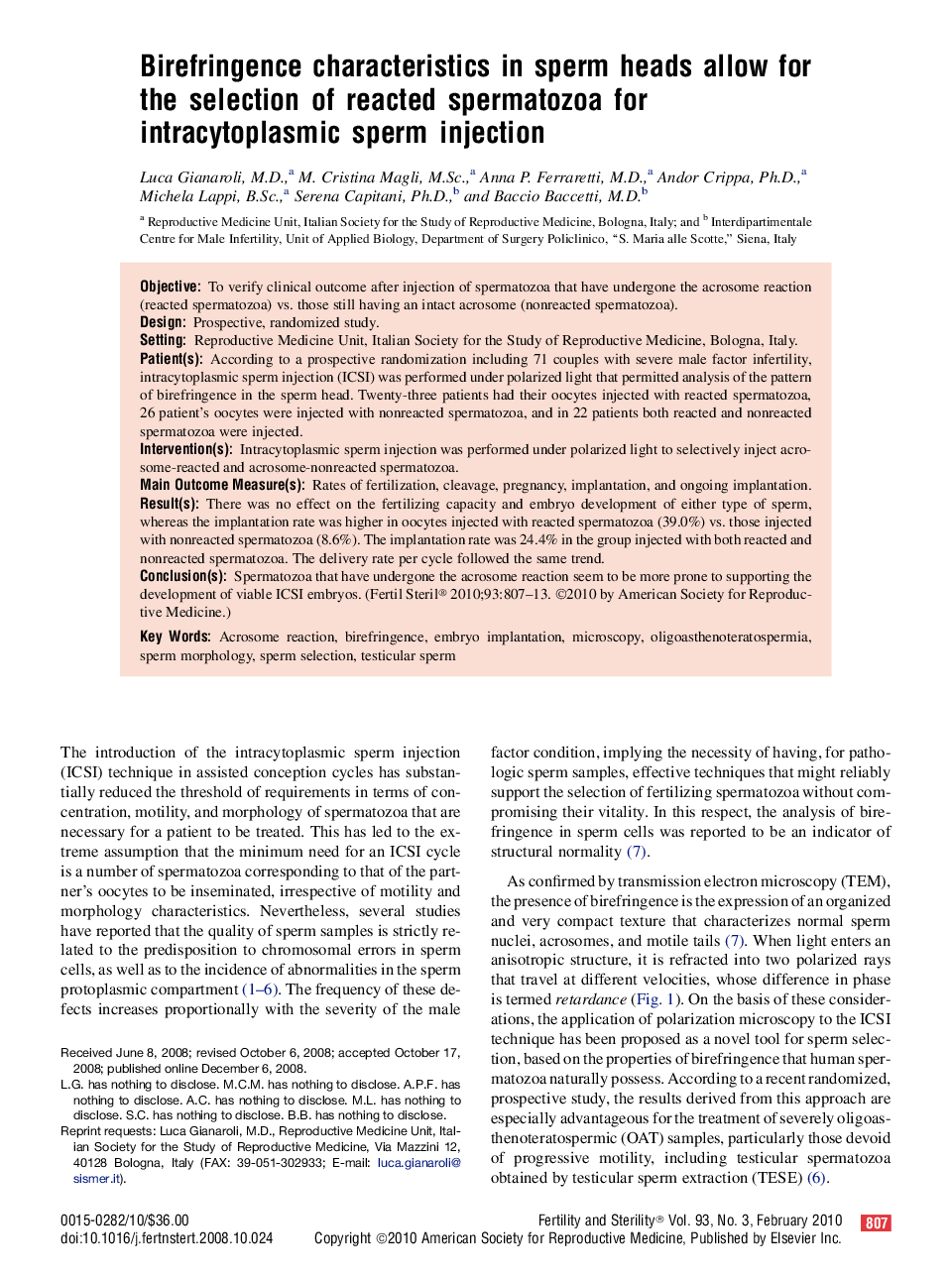| Article ID | Journal | Published Year | Pages | File Type |
|---|---|---|---|---|
| 3938341 | Fertility and Sterility | 2010 | 7 Pages |
ObjectiveTo verify clinical outcome after injection of spermatozoa that have undergone the acrosome reaction (reacted spermatozoa) vs. those still having an intact acrosome (nonreacted spermatozoa).DesignProspective, randomized study.SettingReproductive Medicine Unit, Italian Society for the Study of Reproductive Medicine, Bologna, Italy.Patient(s)According to a prospective randomization including 71 couples with severe male factor infertility, intracytoplasmic sperm injection (ICSI) was performed under polarized light that permitted analysis of the pattern of birefringence in the sperm head. Twenty-three patients had their oocytes injected with reacted spermatozoa, 26 patient's oocytes were injected with nonreacted spermatozoa, and in 22 patients both reacted and nonreacted spermatozoa were injected.Intervention(s)Intracytoplasmic sperm injection was performed under polarized light to selectively inject acrosome-reacted and acrosome-nonreacted spermatozoa.Main Outcome Measure(s)Rates of fertilization, cleavage, pregnancy, implantation, and ongoing implantation.Result(s)There was no effect on the fertilizing capacity and embryo development of either type of sperm, whereas the implantation rate was higher in oocytes injected with reacted spermatozoa (39.0%) vs. those injected with nonreacted spermatozoa (8.6%). The implantation rate was 24.4% in the group injected with both reacted and nonreacted spermatozoa. The delivery rate per cycle followed the same trend.Conclusion(s)Spermatozoa that have undergone the acrosome reaction seem to be more prone to supporting the development of viable ICSI embryos.
